 Cooling things down in space is trickier than it might sound, but that is exactly the process the James Webb telescope is going through right now. Getting down to cryogenic temperature is imperative for its infrared imaging systems to work correctly. While the telescope has already started, it will be another few weeks before the process is complete and it's ready to capture its first groundbreaking infrared images of the universe. That might seem like an exceptionally long time to cool something down; however, it's par for the course in space.
Cooling things down in space is trickier than it might sound, but that is exactly the process the James Webb telescope is going through right now. Getting down to cryogenic temperature is imperative for its infrared imaging systems to work correctly. While the telescope has already started, it will be another few weeks before the process is complete and it's ready to capture its first groundbreaking infrared images of the universe. That might seem like an exceptionally long time to cool something down; however, it's par for the course in space.
 Multilayer insulation (MLI) blankets must conform to exacting specifications to insulate high value products, from MRI machine components in the medical sector to satellites and other spacecraft. Partnering with an MLI blanket contract manufacturer relieves the OEM of many processing steps and can expedite production cycle time for these highly customized products. In this article, we will discuss three of the most important considerations to keep in mind when deciding whether to outsource custom MLI blanket manufacturing and what capabilities to seek in a contract manufacturing organization (CMO).
Multilayer insulation (MLI) blankets must conform to exacting specifications to insulate high value products, from MRI machine components in the medical sector to satellites and other spacecraft. Partnering with an MLI blanket contract manufacturer relieves the OEM of many processing steps and can expedite production cycle time for these highly customized products. In this article, we will discuss three of the most important considerations to keep in mind when deciding whether to outsource custom MLI blanket manufacturing and what capabilities to seek in a contract manufacturing organization (CMO).
Read More
On December 21, the US Department of Energy (DOE) announced the establishment of the Office of Clean Energy Demonstrations, a new DOE office that will help deliver new, good-paying jobs for American families and workers, and reduce pollution while benefitting disadvantaged communities. The Bipartisan Infrastructure Law provides more than $20 billion to establish the Office of Clean Energy Demonstrations and support clean energy technology demonstration projects in areas including clean hydrogen, carbon capture, grid-scale energy storage, small modular reactors and more.
Read More
 A team of scientists have succeeded in producing the very first African lion in-vitro embryos after the vitrification of immature oocytes. For this specific method of cryopreservation, the scientists, who hail from the Leibniz Institute for Zoo and Wildlife Research (Leibniz-IZW) in Germany, Givskud Zoo–Zootopia in Denmark, and the University of Milan, collected oocytes directly after an animal was castrated or deceased and immediately froze them at -196°C in liquid nitrogen. This technique allows the storage of oocytes of valuable animals for an unlimited time so they can be used to produce offspring with the help of assisted reproduction techniques. The aim is to further improve and apply these methods to save highly endangered species, such as the Asiatic lion, from extinction. The current research on African lions as a model species is an important step in this direction. The results are reported in the scientific journal, Cryobiology.
A team of scientists have succeeded in producing the very first African lion in-vitro embryos after the vitrification of immature oocytes. For this specific method of cryopreservation, the scientists, who hail from the Leibniz Institute for Zoo and Wildlife Research (Leibniz-IZW) in Germany, Givskud Zoo–Zootopia in Denmark, and the University of Milan, collected oocytes directly after an animal was castrated or deceased and immediately froze them at -196°C in liquid nitrogen. This technique allows the storage of oocytes of valuable animals for an unlimited time so they can be used to produce offspring with the help of assisted reproduction techniques. The aim is to further improve and apply these methods to save highly endangered species, such as the Asiatic lion, from extinction. The current research on African lions as a model species is an important step in this direction. The results are reported in the scientific journal, Cryobiology.
Read More
Researchers Reveal Electronic Nature of Charge Density Wave and Electron-Phonon Coupling In Kagome Superconductor
 Recently, the Kagome superconductors AV3Sb5 (A = K, Rb and Cs) have attracted enormous attention due to their novel phenomena and rich physics. They exhibit unconventional charge density wave (CDW), giant anomalous Hall effect, and superconductivity. The CDW state is intimately related to the anomalous Hall effect and competes with superconductivity under pressure. Investigating the electronic structure of the CDW state is essential to understand its nature and the related physical properties.
Recently, the Kagome superconductors AV3Sb5 (A = K, Rb and Cs) have attracted enormous attention due to their novel phenomena and rich physics. They exhibit unconventional charge density wave (CDW), giant anomalous Hall effect, and superconductivity. The CDW state is intimately related to the anomalous Hall effect and competes with superconductivity under pressure. Investigating the electronic structure of the CDW state is essential to understand its nature and the related physical properties.
Read More
Cryoport, Inc., a temperature-controlled supply chain solutions provider for the life sciences industry, announces that it has entered into a strategic partnership with Cell Matters, S.A. to deliver to the life sciences industry end-to-end cryopreservation services for leukapheresis derived therapies supporting both autologous and allogeneic cell therapies. The companies will jointly develop the commercial approach for marketing these services.
Read More
 Valve manufacturer Demaco Netherlands BV (Demaco) has announced the release of its new range of Demaco Cryogenic Valves. Having redesigned and improved its current valve range, which includes manual on/off, pneumatic on/off, and control valves, the company has overhauled its technology to help increase the area of usage.
Valve manufacturer Demaco Netherlands BV (Demaco) has announced the release of its new range of Demaco Cryogenic Valves. Having redesigned and improved its current valve range, which includes manual on/off, pneumatic on/off, and control valves, the company has overhauled its technology to help increase the area of usage.
Read More
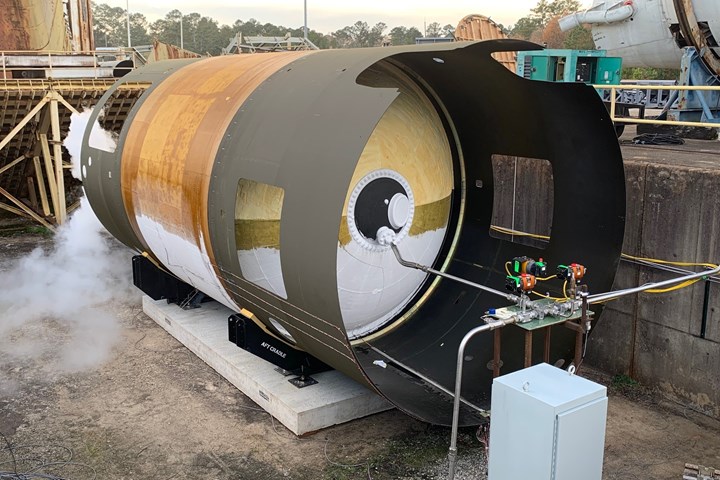 Boeing has announced a technology breakthrough for cryogenic fuel tanks. These tanks are essential components of liquid-fueled rockets because they hold the liquid hydrogen and the liquid oxygen that act as the fuel. They could also play a very important role in the development of long-haul, zero-emission flight, carrying liquid hydrogen as jet engine fuel.
Boeing has announced a technology breakthrough for cryogenic fuel tanks. These tanks are essential components of liquid-fueled rockets because they hold the liquid hydrogen and the liquid oxygen that act as the fuel. They could also play a very important role in the development of long-haul, zero-emission flight, carrying liquid hydrogen as jet engine fuel.
Read More
#BlackInQuantum
 Black scientists have played important roles in the history of quantum physics. In this growing area of specialization, there’s an opportunity to continue that legacy. The sixth person to earn a doctoral degree in physics from an American institution was African American scientist Edward Alexander Bouchet; it was 1876, just 11 years after the US had adopted a constitutional amendment that outlawed slavery. Never again have African Americans made up such a large percentage of US physicists. In fact, it would take another 42 years before a second African American man earned a physics PhD in the United States.
Black scientists have played important roles in the history of quantum physics. In this growing area of specialization, there’s an opportunity to continue that legacy. The sixth person to earn a doctoral degree in physics from an American institution was African American scientist Edward Alexander Bouchet; it was 1876, just 11 years after the US had adopted a constitutional amendment that outlawed slavery. Never again have African Americans made up such a large percentage of US physicists. In fact, it would take another 42 years before a second African American man earned a physics PhD in the United States.
Read More
Dark Energy Spectroscopic Instrument (DESI) Creates Largest 3D Map of the Cosmos
 The Dark Energy Spectroscopic Instrument (DESI) has capped off the first seven months of its survey run by smashing through all previous records for three-dimensional galaxy surveys, creating the largest and most detailed map of the universe ever. Yet it’s only about 10% of the way through its five-year mission. Once completed, that phenomenally detailed 3D map will yield a better understanding of dark energy, and thereby give physicists and astronomers a better understanding of the past – and future – of the universe. Meanwhile, the impressive technical performance and literally cosmic achievements of the survey thus far are helping scientists reveal the secrets of the most powerful sources of light in the universe. DESI is an international science collaboration managed by the Department of Energy’s (DOE) Lawrence Berkeley National Laboratory (Berkeley Lab) with primary funding for construction and operations from DOE’s Office of Science.
The Dark Energy Spectroscopic Instrument (DESI) has capped off the first seven months of its survey run by smashing through all previous records for three-dimensional galaxy surveys, creating the largest and most detailed map of the universe ever. Yet it’s only about 10% of the way through its five-year mission. Once completed, that phenomenally detailed 3D map will yield a better understanding of dark energy, and thereby give physicists and astronomers a better understanding of the past – and future – of the universe. Meanwhile, the impressive technical performance and literally cosmic achievements of the survey thus far are helping scientists reveal the secrets of the most powerful sources of light in the universe. DESI is an international science collaboration managed by the Department of Energy’s (DOE) Lawrence Berkeley National Laboratory (Berkeley Lab) with primary funding for construction and operations from DOE’s Office of Science.
Read More
 Launch vehicles, particularly the upper stages, often use cryogenic rocket propellants such as liquid oxygen, liquid hydrogen and liquid methane because of their high specific impulse and high storage density. The pressurization, control and distribution of these propellants requires sophisticated valving that can operate and seal at these extreme temperatures.
Launch vehicles, particularly the upper stages, often use cryogenic rocket propellants such as liquid oxygen, liquid hydrogen and liquid methane because of their high specific impulse and high storage density. The pressurization, control and distribution of these propellants requires sophisticated valving that can operate and seal at these extreme temperatures.
Read More
NASA Hall of Fame Inventor, Cold Facts Columnist James E. Fesmire Named GenH2’s Chief Technology Officer
 On December 15, GenH2, a leading developer of liquid hydrogen infrastructure solutions, formally announced the appointment of renowned NASA veteran and company co-founder James E. Fesmire as Chief Architect and Chief Technology Officer. In his role, Fesmire will shape GenH2’s technology vision and drive product evolution and expansion. Known for his world-class expertise and trailblazing contributions to developing cryogenics, materials, and energy technologies, Fesmire specializes in all aspects of liquid hydrogen storage and transfer.
On December 15, GenH2, a leading developer of liquid hydrogen infrastructure solutions, formally announced the appointment of renowned NASA veteran and company co-founder James E. Fesmire as Chief Architect and Chief Technology Officer. In his role, Fesmire will shape GenH2’s technology vision and drive product evolution and expansion. Known for his world-class expertise and trailblazing contributions to developing cryogenics, materials, and energy technologies, Fesmire specializes in all aspects of liquid hydrogen storage and transfer.
Read More
Particle Accelerator Magnet Sets Record Using High Temperature Superconductor
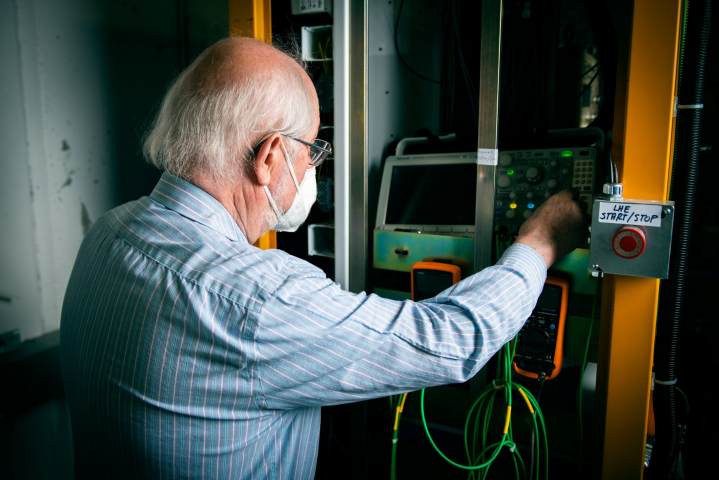 Cost- and energy-efficient rapid cycling magnets for particle accelerators are critical for particle physics research. Their performance determines how frequently a circular particle accelerator can receive a bunch of particles, propel them to higher energy, send them to an experiment or target station, and then repeat all over again. A small team of physicists, engineers and technicians at the US Department of Energy’s Fermi National Accelerator Laboratory (Fermilab, CSA CSM), led by Henryk Piekarz, demonstrated the world’s fastest magnetic ramping rates for particle accelerator magnets. Noteworthy, they achieved this record by using magnets made with energy-efficient, high temperature superconducting material.
Cost- and energy-efficient rapid cycling magnets for particle accelerators are critical for particle physics research. Their performance determines how frequently a circular particle accelerator can receive a bunch of particles, propel them to higher energy, send them to an experiment or target station, and then repeat all over again. A small team of physicists, engineers and technicians at the US Department of Energy’s Fermi National Accelerator Laboratory (Fermilab, CSA CSM), led by Henryk Piekarz, demonstrated the world’s fastest magnetic ramping rates for particle accelerator magnets. Noteworthy, they achieved this record by using magnets made with energy-efficient, high temperature superconducting material.
Read More
The Second Quantum Revolution
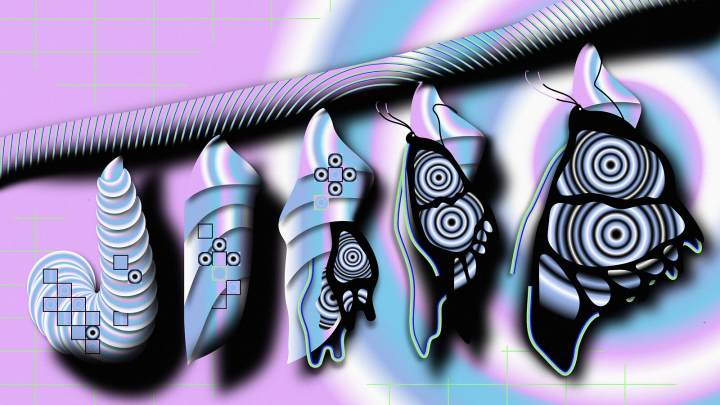 For physicists trying to harness the power of electricity, no tool was more important than the vacuum tube. This lightbulb-like device controlled the flow of electricity and could amplify signals. In the early 20th century, vacuum tubes were used in radios, televisions and long-distance telephone networks. But vacuum tubes had significant drawbacks: They generated heat; they were bulky; and they had a propensity to burn out. Physicists at Bell Labs, a spin-off of AT&T, were interested in finding a replacement.
For physicists trying to harness the power of electricity, no tool was more important than the vacuum tube. This lightbulb-like device controlled the flow of electricity and could amplify signals. In the early 20th century, vacuum tubes were used in radios, televisions and long-distance telephone networks. But vacuum tubes had significant drawbacks: They generated heat; they were bulky; and they had a propensity to burn out. Physicists at Bell Labs, a spin-off of AT&T, were interested in finding a replacement.
Read More
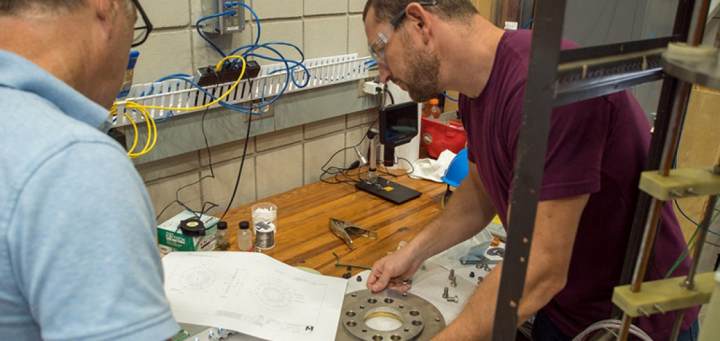 A new $15.8 million grant from the National Science Foundation (NSF) will produce a detailed design for the world’s most powerful superconducting magnet at the Florida State University-headquartered National High Magnetic Field Laboratory (CSA CSM). While the National MagLab is already home to more than a dozen world-record magnets used by researchers from around the world, the future 40-tesla magnet will advance the study of quantum matter with its low-noise environment that surpasses present-day resistive and hybrid magnets.
A new $15.8 million grant from the National Science Foundation (NSF) will produce a detailed design for the world’s most powerful superconducting magnet at the Florida State University-headquartered National High Magnetic Field Laboratory (CSA CSM). While the National MagLab is already home to more than a dozen world-record magnets used by researchers from around the world, the future 40-tesla magnet will advance the study of quantum matter with its low-noise environment that surpasses present-day resistive and hybrid magnets.
Read More
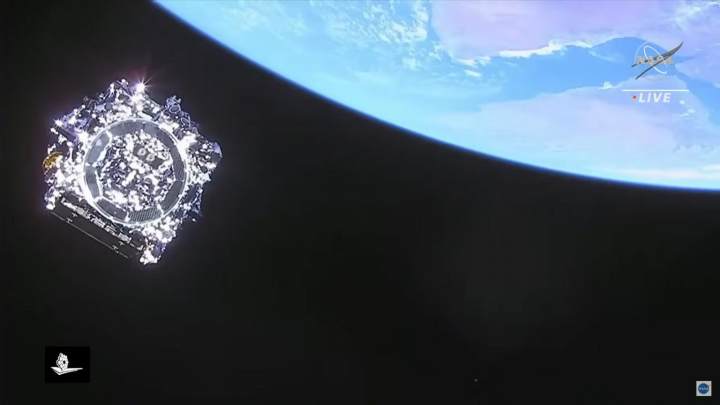 On December 25, the largest and most powerful space telescope ever constructed by NASA was successfully launched from Earth. With unprecedented technology, the James Webb Space Telescope (JWST) will peer both near and far, from the planets and bodies in our solar system to the deepest reaches of space, where the first stars and galaxies formed more than 13 billion years ago. JWST has a mirror that is 21.3 feet (6.5 meters) across, making it physically much larger than the Hubble Space Telescope and Hubble’s infrared sister telescope, the Spitzer Space Telescope, operated by Caltech’s IPAC; it also has state-of-the-art photon detectors that register a wider range of wavelengths and enable deeper and more detailed views than Spitzer.
On December 25, the largest and most powerful space telescope ever constructed by NASA was successfully launched from Earth. With unprecedented technology, the James Webb Space Telescope (JWST) will peer both near and far, from the planets and bodies in our solar system to the deepest reaches of space, where the first stars and galaxies formed more than 13 billion years ago. JWST has a mirror that is 21.3 feet (6.5 meters) across, making it physically much larger than the Hubble Space Telescope and Hubble’s infrared sister telescope, the Spitzer Space Telescope, operated by Caltech’s IPAC; it also has state-of-the-art photon detectors that register a wider range of wavelengths and enable deeper and more detailed views than Spitzer.
Read More
 Today’s time-sensitive market needs revolutionization of traditional costly technologies. The cryogenic and electronic market development and utilization started from 1970 for commercial applications, and both are fast-growing technologies. There has been significant advancement of electronic products. Nowadays, a small smartphone has much more data storage and processing power capability than large costly computers in the 1970s. Smartphones are now available to most people due to low cost. Due to affordable cost and high utilization factor, the electronic product demand is always increasing. In contrast, cryogenic products are exceptionally expensive, making them inaccessible to most people.
Today’s time-sensitive market needs revolutionization of traditional costly technologies. The cryogenic and electronic market development and utilization started from 1970 for commercial applications, and both are fast-growing technologies. There has been significant advancement of electronic products. Nowadays, a small smartphone has much more data storage and processing power capability than large costly computers in the 1970s. Smartphones are now available to most people due to low cost. Due to affordable cost and high utilization factor, the electronic product demand is always increasing. In contrast, cryogenic products are exceptionally expensive, making them inaccessible to most people.
Read More
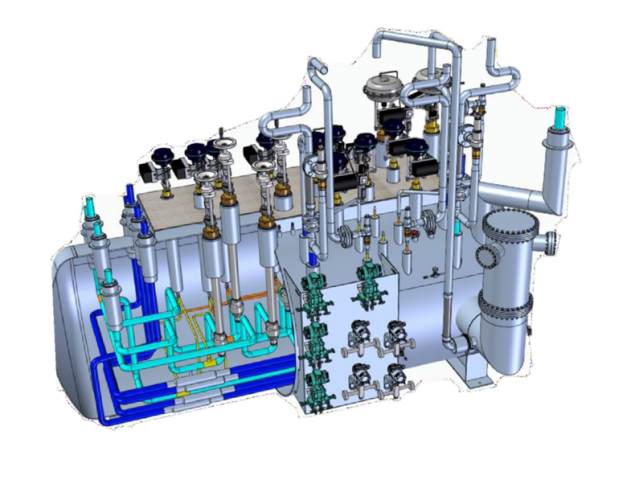 Hydrogen is the most abundant chemical element in the universe and the most important feedstock for life. In Greek, the word “hydrogen” is composed of the terms “hydro” and “genes,” which means water generator. In 1766, the English chemist Henry Cavendish distinguished hydrogen from other flammable gases and identified its properties, but the name hydrogen was given by Antoine-Laurent Lavoisier in 1781. Hydrogen was commonly featured in the design of gas balloons in the 18th century, and then in the 20th century, substantial exploitation of hydrogen propellants in space propulsion systems began.
Hydrogen is the most abundant chemical element in the universe and the most important feedstock for life. In Greek, the word “hydrogen” is composed of the terms “hydro” and “genes,” which means water generator. In 1766, the English chemist Henry Cavendish distinguished hydrogen from other flammable gases and identified its properties, but the name hydrogen was given by Antoine-Laurent Lavoisier in 1781. Hydrogen was commonly featured in the design of gas balloons in the 18th century, and then in the 20th century, substantial exploitation of hydrogen propellants in space propulsion systems began.
Read More
Ability Engineering Technology Introduces Ultra Precise Cryo Valve to Public
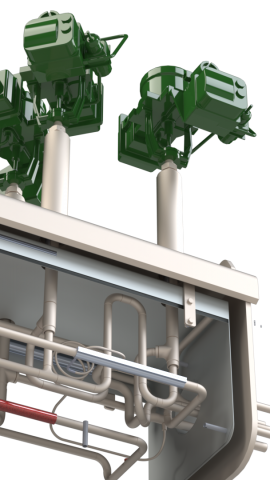 Ability Engineering Technology (AET), an Illinois-based manufacturer of equipment used in cryogenic process applications, has announced the introduction of a standard product line of Cryogenic Valves. According to Matt Resler, Sales Director at AET, “Our cryogenic valves have been successfully used for more than 30 years by our DOE clients, and we only recently decided to make them available for purchase by the larger industrial market.”
Ability Engineering Technology (AET), an Illinois-based manufacturer of equipment used in cryogenic process applications, has announced the introduction of a standard product line of Cryogenic Valves. According to Matt Resler, Sales Director at AET, “Our cryogenic valves have been successfully used for more than 30 years by our DOE clients, and we only recently decided to make them available for purchase by the larger industrial market.”
Read More
Space Cryogenic Workshop Recap
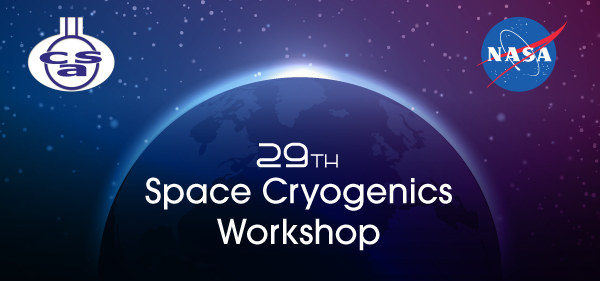 During a year filled with uncertainty, many were worried about the effects of the pandemic on CSA’s biennial Space Cryogenics Workshop (SCW). After much consideration and effort, we are pleased to report the successful execution of our first – and hopefully only – virtual SCW. Hosted virtually on the Remo® online platform on November 15 and 16, the event was two days of presentations, networking and reconnecting with colleagues and friends. Each of the two days was broken up into two groups of presentations, beginning and ending with networking opportunities in Remo’s virtual conference room. Co-chairs Amir Jahromi and Mark Kimball moderated all four sessions while CSA’s Megan Galeher and Tate Paglia – executive director and editor, respectively – worked as administrators for the sessions. Sponsors included Lake Shore Cryotronics, XMA, Lihan, Eta Space and Ability Engineering Technology, all CSA Corporate Sustaining Members.
During a year filled with uncertainty, many were worried about the effects of the pandemic on CSA’s biennial Space Cryogenics Workshop (SCW). After much consideration and effort, we are pleased to report the successful execution of our first – and hopefully only – virtual SCW. Hosted virtually on the Remo® online platform on November 15 and 16, the event was two days of presentations, networking and reconnecting with colleagues and friends. Each of the two days was broken up into two groups of presentations, beginning and ending with networking opportunities in Remo’s virtual conference room. Co-chairs Amir Jahromi and Mark Kimball moderated all four sessions while CSA’s Megan Galeher and Tate Paglia – executive director and editor, respectively – worked as administrators for the sessions. Sponsors included Lake Shore Cryotronics, XMA, Lihan, Eta Space and Ability Engineering Technology, all CSA Corporate Sustaining Members.



